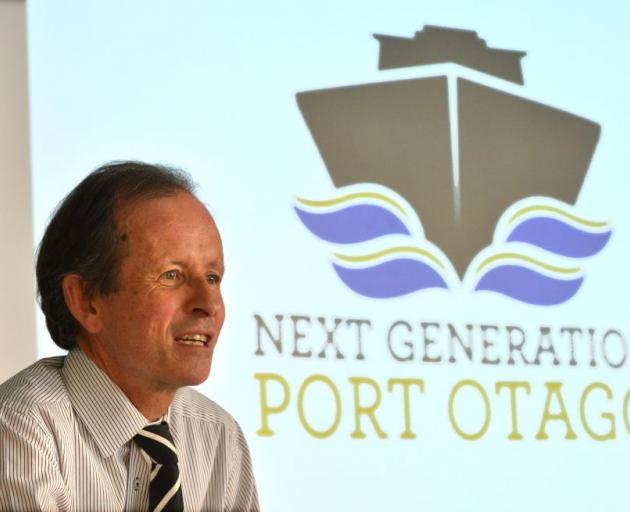
The 13km channel, less than 50% of which will actually need to be dredged to 14m, will initially have rocks removed from three sites near Port Chalmers, some muddy banks cleared using a grab-dredge and then sand removed by suction-dredge.
The latter will account for most of the 1.31 million cu m spoil to be removed.
That spoil will dumped at three onshore sites, mainly the century-old site north of Hayward Pt, and another site 6.5km out to sea, northeast of Taiaroa Head.
All of Port Otago's $30 million to $45 million capital works programme is consented, albeit it after an appeal to the Environment Court.
Port Otago chief executive Geoff Plunket said yesterday the idea to dredge, for the ''inevitability'' of larger ships, began eight years ago and the consenting process took five-and-a-half years to complete.
The applications for the 25-year consents were contentious. Submissions were made by 105 individuals, groups and businesses 75% of them opposed, including some sporting, fishing and recreational groups concerned about sand build-up around the coastline.
Mr Plunket said its consents consequently included multiple monitoring conditions, including turbidity (clarity), seagrasses and sand monitoring, at spoil sites, within the harbour, near-shore and beaches.
All the new monitoring data, including environmental, would be logged on to Port Otago's website, and Port Otago would continue working with community groups, iwi, fishing interests and the Department of Conservation, he said.
Port Otago would continue to engage with both the residents of Port Chalmers and also those around the wider harbour area, he said.
''We will work hard to minimise the effect on the local community ... it's our duty to minimise [any impacts],'' Mr Plunket said.
Sheet piling of the port's wharves, vibrated into place and not hammer driven, would be done during daylight hours and dredging in the channel would be done for about 100 hours per week, by two dredge crews.
He said using Port Otago's suction dredge New Era, with its carrying hopper of 600cu m and a new barge of 700 cu m, was more acceptable and was a ''known quantity'', rather than using a contractor's larger dredge of 2000 cu m.simon.hartley@odt.co.nz











